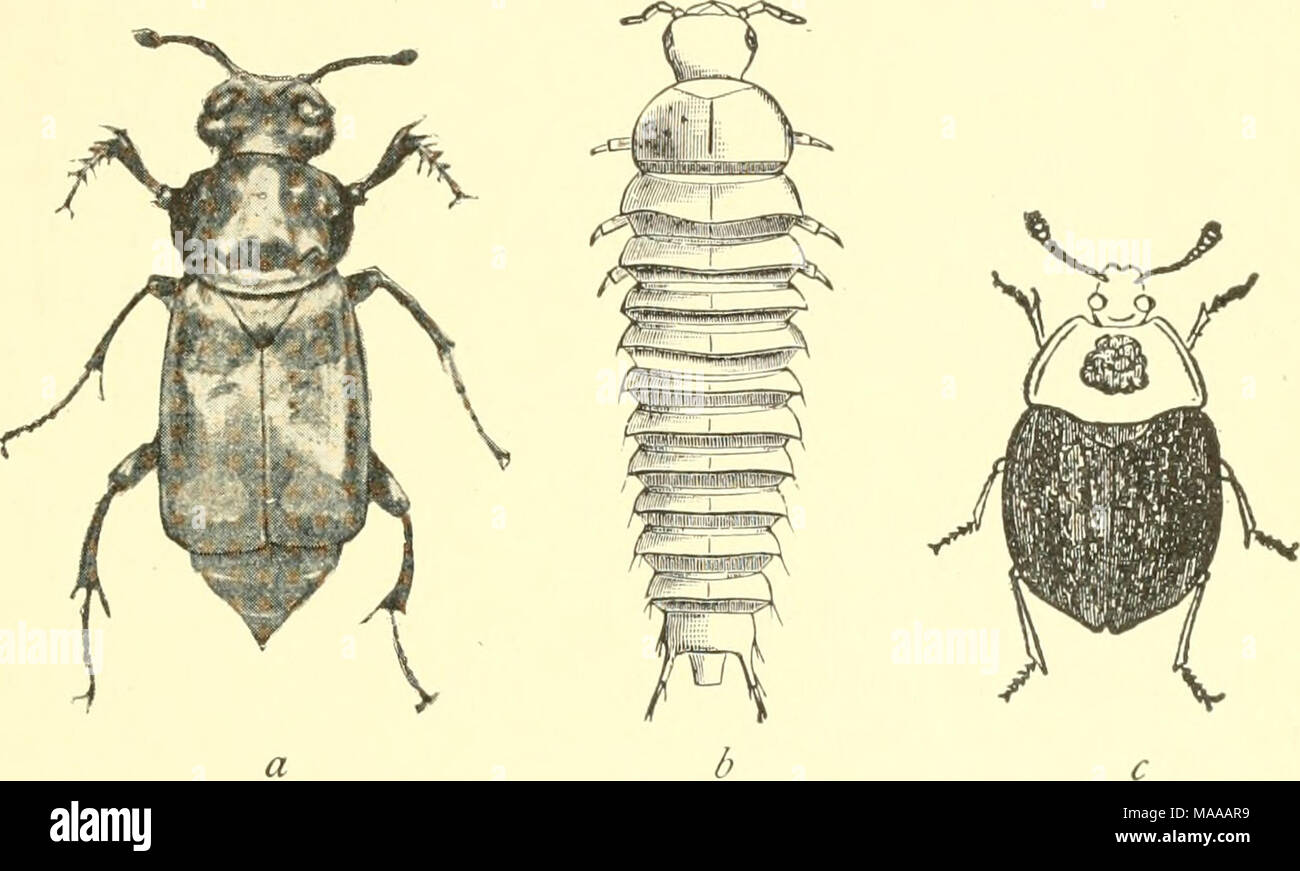. Economic entomology for the farmer and the fruit grower, and for use as a text-book in agricultural schools and colleges; . Carrion beetles.—a, Necrophorus americana: b, larva o( Silpha lapponica ; c, Silpha aniericana. are much flattened and proportionately very broad, with small heads, and on the other by the genus Necrophorus, in which the species are much more heavily built, narrower, not flattened, and with large heads. These are the true "burying" beetles, and derive the name from their habit of excavating beneath small dead animals and gradually sinking them below the surfac

Image details
Contributor:
The Bookworm Collection / Alamy Stock PhotoImage ID:
MAAAR9File size:
14.3 MB (381 KB Compressed download)Releases:
Model - no | Property - noDo I need a release?Dimensions:
2884 x 1733 px | 24.4 x 14.7 cm | 9.6 x 5.8 inches | 300dpiMore information:
This image is a public domain image, which means either that copyright has expired in the image or the copyright holder has waived their copyright. Alamy charges you a fee for access to the high resolution copy of the image.
This image could have imperfections as it’s either historical or reportage.
. Economic entomology for the farmer and the fruit grower, and for use as a text-book in agricultural schools and colleges; . Carrion beetles.—a, Necrophorus americana: b, larva o( Silpha lapponica ; c, Silpha aniericana. are much flattened and proportionately very broad, with small heads, and on the other by the genus Necrophorus, in which the species are much more heavily built, narrower, not flattened, and with large heads. These are the true "burying" beetles, and derive the name from their habit of excavating beneath small dead animals and gradually sinking them below the surface level. Then the females lay their eggs in and the larvae live upon the buried and decaying creatures. The other carrion beetles make no pretence of burying their prey, but lay their eggs at once, and the larvae feed upon it from below, usually making a short burrow in the soil for shelter, though this is not universal. In both types the larvae are black, flattened, broadly oval, and with